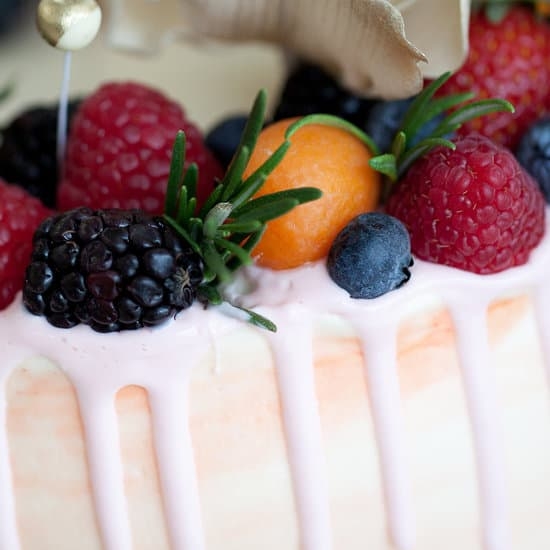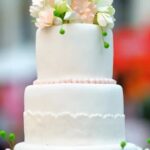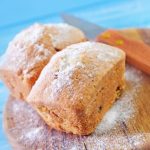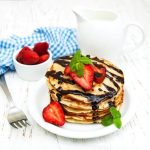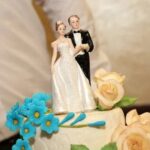Have you ever wondered what are cake decorations called and how they can transform a simple cake into a stunning masterpiece? Cake decorations play a crucial role in not only enhancing the visual appeal of a cake but also adding personality and flair to any celebration. From elegant wedding cakes to whimsical birthday treats, the right decorations can truly elevate the overall look and feel of a dessert.
The history of cake decorations dates back centuries, with cultures around the world using various decorative elements to adorn their sweet creations. Over time, these decorations have evolved from simple designs to intricate masterpieces, showcasing creativity and artistry in the world of baking. Whether it’s intricate sugar flowers or shimmering edible glitter, cake decorators have endless options to choose from when it comes to adorning their creations.
When it comes to decorating cakes, there is a wide array of options available, ranging from edible fondant and sugar flowers to non-edible plastic figurines and ribbons. Professional bakers often utilize specialized tools like piping bags, spatulas, and fondant cutters to bring their creative visions to life.
In addition to discussing different types of decorations and tools used in cake decorating, this article will also delve into techniques such as piping, fondant sculpting, and stenciling that are essential for achieving professional-looking results.
History of Cake Decorations
Cake decorating has a long and fascinating history that dates back centuries. The art of adorning cakes with decorative elements can be traced back to ancient civilizations such as the Egyptians, Greeks, and Romans. These ancient cultures used simple ingredients like honey, fruits, and nuts to embellish their baked goods for ceremonial occasions. As time progressed, cake decorations became more intricate and ornate, reflecting the social status of the individual or family hosting the event.
One of the most iconic forms of early cake decorations was marzipan, a sweet almond paste that could be molded into intricate shapes and designs. Marzipan was particularly popular in medieval Europe, where it was used to create elaborate sculptures and figurines to adorn wedding cakes and special desserts. The tradition of using marzipan as a decorative element on cakes continues today, with many bakers still incorporating this edible art form into their creations.
As baking techniques advanced and spread around the world, so too did the variety of cake decorations available. From delicate sugar flowers to intricate royal icing piping, there are now countless options for embellishing cakes to suit any occasion or theme.
Whether it’s a classic wedding cake adorned with intricate lace patterns or a whimsical birthday cake topped with colorful fondant figures, modern cake decorators have a wealth of tools and techniques at their disposal to create stunning edible works of art that not only look beautiful but taste delicious as well.
Types of Edible Cake Decorations
Edible cake decorations play a crucial role in turning a simple cake into a work of art. From intricate designs to whimsical shapes, edible decorations can truly elevate the overall look of any cake, making it stand out and adding a touch of creativity and flair. In this section, we will delve into the world of edible cake decorations, exploring various options that bakers and decorators can use to make their creations visually stunning and delicious.
Fondant: A Versatile & Popular Choice
One of the most popular choices for edible cake decorations is fondant. Fondant is a pliable icing that can be rolled out and draped over cakes to create a smooth and seamless finish.
It provides a clean canvas for intricate designs, shapes, and textures, making it a versatile choice for both beginner and experienced bakers alike. Fondant can be tinted in different colors, molded into figurines or flowers, and even used to cover an entire cake as a base for further decorations.
Edible Glitter & Luster Dust: Adding Sparkle & Shine
For those looking to add some sparkle and shine to their cakes, edible glitter and luster dust are go-to options. These edible decorations come in various hues and finishes, allowing decorators to create stunning effects like metallic accents or shimmering highlights on their cakes. Edible glitter can be sprinkled over frostings or used to highlight specific areas on a cake, while luster dust can be brushed on fondant or gum paste decorations for a subtle sheen.
Sugar Flowers: Beautiful & Delicate Creations
Sugar flowers are another exquisite option for decorating cakes with edible embellishments. These delicate creations are handmade using sugar paste or gum paste, shaped petal by petal to resemble real flowers. Sugar flowers add elegance and beauty to any cake design, whether used as standalone decorations or combined with other elements like foliage or ribbons. They require precision and skill to make but result in breathtaking floral arrangements that can be admired before being devoured.
Types of Non-Edible Cake Decorations
Cake decorations play a crucial role in enhancing the appearance of a cake, turning it from a simple dessert into a stunning centerpiece for any celebration. While edible decorations like fondant and sugar flowers are popular choices, non-edible options also offer a wide range of creative possibilities. Let’s delve into the world of non-edible cake decorations to discover what can be used to adorn your next baked creation.
When it comes to non-edible cake decorations, the options are truly endless. From plastic figurines that can add a whimsical touch to ribbons that offer elegance and charm, there is something for every style and theme. Here are some common non-edible cake decorations that are frequently used by bakers and decorators:
- Plastic Figurines: These fun and colorful decorations come in various shapes and sizes, perfect for adding a playful element to children’s birthday cakes or themed desserts.
- Ribbons: Elegant satin or grosgrain ribbons can be used to wrap around cake tiers or create beautiful bows for a sophisticated look.
- Paper Toppers: Customizable paper toppers featuring messages, images, or designs can be placed on top of cakes for personalized celebrations like weddings, baby showers, or graduations.
Incorporating non-edible decorations into your cake design not only adds visual interest but also allows for greater flexibility in creativity. Whether you’re aiming for a classic and refined look with ribbons or incorporating a touch of fun with plastic figurines, these decorative elements can truly elevate the overall aesthetic of your cake. Experiment with different combinations and unleash your imagination to create unique and unforgettable cake designs that will leave a lasting impression on your guests.
Popular Cake Decoration Tools
Cake decorations are an essential part of making any cake look beautiful and appealing. These decorations can take a simple cake to the next level, turning it into a work of art that is not only visually stunning but also delicious. But what are cake decorations called? There are many different types of cake decorations, both edible and non-edible, that bakers use to enhance the appearance of their creations.
When it comes to edible cake decorations, some popular options include fondant, edible glitter, and sugar flowers. Fondant is a versatile and pliable icing that can be molded into various shapes and designs, making it perfect for creating intricate details on cakes. Edible glitter adds a touch of sparkle and glamour to any dessert, while sugar flowers provide a beautiful and delicate finishing touch.
Non-edible cake decorations are also widely used in the baking world. These include items like plastic figurines, ribbons, and paper toppers. Plastic figurines can be themed to suit any occasion or celebration, while ribbons add a touch of elegance and can be easily matched to any color scheme. Paper toppers come in a variety of designs and styles, making them a versatile option for decorating cakes for different events or parties.
| Cake Decoration Type | Description |
|---|---|
| Fondant | Versatile icing that can be molded into various shapes for intricate designs |
| Edible Glitter | Adds sparkle and glamour to desserts |
| Sugar Flowers | Beautiful and delicate finishing touch typically made from sugar paste |
Techniques for Cake Decorating
Cake decorations play a significant role in making a cake visually appealing and can turn a simple dessert into a stunning centerpiece for any celebration. These embellishments are what make cakes unique and special, adding that extra touch of creativity and artistry to the baked treat. Whether it’s for a birthday, wedding, or any special occasion, the right decorations can truly elevate the overall look of a cake.
When it comes to cake decorating, there are various techniques that bakers and enthusiasts can use to create beautiful designs on their cakes. One popular technique is piping, which involves using a piping bag filled with frosting to create intricate patterns, borders, and even writing on the cake. Piping allows for precise control over the design and is ideal for adding details that require fine lines or delicate shapes.
Another common cake decorating technique is fondant sculpting. Fondant is a smooth, pliable icing that can be molded into different shapes and figures. Whether you’re creating edible flowers, cute animals, or elegant bows, fondant sculpting allows for endless possibilities when it comes to decorating cakes. With the right tools and a bit of practice, you can bring your imaginative creations to life on top of your cakes.
Stenciling is also a fun and versatile technique that can add texture and detail to your cake decorations. By using stencils with various patterns or designs, you can easily transfer intricate images onto your cakes using edible dusts or airbrush colors. Stenciling is great for creating backgrounds, borders, or accents that give your cakes a professional finish. Experiment with different stencils and colors to achieve unique looks for your next baking project.
Professional Cake Decorating Tips
Professional bakers have a wealth of knowledge and experience when it comes to creating stunning cake decorations that leave a lasting impression. One key tip shared by professionals is the importance of starting with a smooth and evenly frosted cake surface. This provides the perfect canvas for intricate designs and ensures a professional finish. Using a rotating cake stand can also make the decorating process much easier, allowing for smooth and precise application of frosting or fondant.
Another valuable tip from professional bakers is to invest in quality tools and ingredients. High-quality piping tips, food coloring, and fondant can make a significant difference in the outcome of your cake decorations.
Professional bakers often recommend using gel food coloring instead of liquid ones, as they are more concentrated and provide vibrant colors without altering the consistency of the frosting or fondant. Additionally, investing in sturdy piping bags and tips can help you achieve clean lines and intricate designs with ease.
When it comes to intricate designs like intricate flower arrangements or elaborate piping work, professional bakers suggest practicing on parchment paper before applying them directly onto the cake. This allows you to perfect your technique without compromising the overall look of the cake. Professional bakers also emphasize the importance of patience and attention to detail when it comes to cake decorating. Taking your time to create each decoration meticulously can result in a beautiful masterpiece that will impress your guests.
| Professional Tip | Detail |
|---|---|
| Start with a smooth cake surface | Ensures professional finish |
| Invest in quality tools & ingredients | Quality products make a significant difference |
| Practice intricate designs on parchment paper first | Allows for perfecting techniques before applying them directly |
DIY Cake Decorating Ideas
Decorating a cake can truly transform it from a simple dessert into a stunning centerpiece for any occasion. Whether it’s a birthday, wedding, or just a casual gathering, the right decorations can elevate the overall look and bring joy to those enjoying it. For those looking to add a personal touch or get creative with their cake decorations at home, there are plenty of DIY ideas to explore.
Here are some creative and budget-friendly DIY cake decorating ideas to inspire your next baking project:
- Buttercream Flower Piping: Learn how to pipe beautiful buttercream flowers using different piping tips. These floral designs can add a whimsical and elegant touch to any cake.
- Chocolate Ganache Drip: Create a decadent chocolate ganache drip effect on your cakes by simply pouring warm ganache over the edges. This adds a luxurious finish that is sure to impress.
- Fresh Fruit Arrangement: Incorporate fresh fruits like berries, kiwi slices, or citrus segments to add color and freshness to your cakes. Not only does it look visually appealing, but it also adds a fruity burst of flavor.
For those looking to try something unique and fun with their cake decorations, these DIY ideas offer endless possibilities for customization. From playing with texture and color to experimenting with flavors, there’s no limit to what you can create when decorating cakes at home.
Remember, the key is to have fun and let your creativity shine through as you decorate your cakes with these DIY ideas.
Conclusion
In conclusion, cake decorations play a vital role in enhancing the visual appeal of cakes and making any celebration truly special. From the historical evolution of cake decorations to the wide variety of edible and non-edible options available today, these intricate details can elevate a simple cake into a work of art. Whether it’s using fondant, sugar flowers, or plastic figurines, each type of decoration adds its unique touch to the overall design.
Professional bakers utilize essential tools such as piping bags, spatulas, and fondant cutters to create stunning decorations, while also implementing techniques like piping, fondant sculpting, and stenciling to achieve intricate designs. These techniques require practice and patience but can result in beautifully decorated cakes that are sure to impress any guest at a party or event.
By following professional tips and exploring creative DIY ideas for cake decorating at home, anyone can master the art of creating visually appealing cakes for various occasions.
In essence, cake decorations are not just finishing touches but essential elements that can transform a simple dessert into a centerpiece worthy of admiration. Whether it’s a birthday, wedding, anniversary, or any other special event, investing time and effort into decorating a cake can truly make the celebration memorable. So next time you’re planning an event or gathering, remember the importance of cake decorations in adding that extra special touch to your dessert table.
Frequently Asked Questions
What Is the Thing Used to Decorate Cakes Called?
The item used to decorate cakes is called a piping bag. This tool is essential for creating intricate designs, borders, and lettering on cakes using icing or frosting.
What Are the Different Types of Cake Decorations?
There are various types of cake decorations that can elevate the appearance of a cake. Some common options include fondant, gum paste flowers, edible glitter, chocolate shavings, sprinkles, fresh fruit, and edible printed images.
What Is the Fancy Name for a Cake Decorator?
The fancy name for a cake decorator is a “pâtissier,” which comes from the French term for pastry chef. A pâtissier specializes in creating and decorating pastries and desserts, including cakes, with precision and artistry.

Welcome to our cake decorating blog! My name is Destiny Flores, and I am the proud owner of a cake decorating business named Cake Karma. Our mission is to provide delicious, beautiful cakes for all occasions. We specialize in creating custom cakes that are tailored specifically to each customer’s individual needs and tastes.

